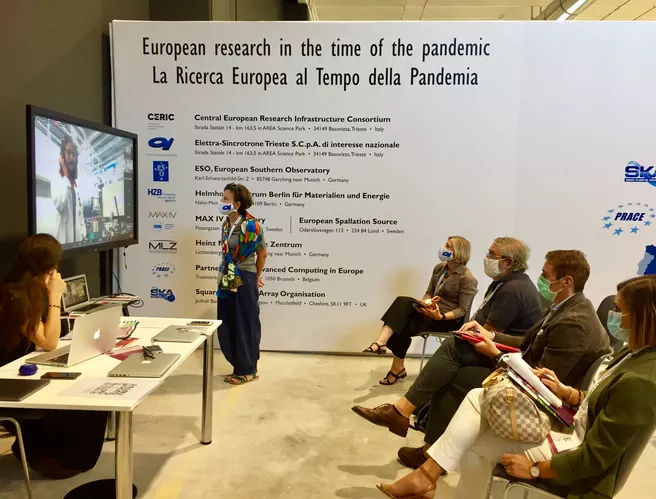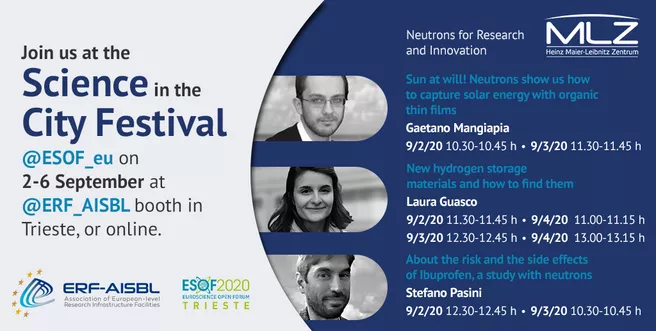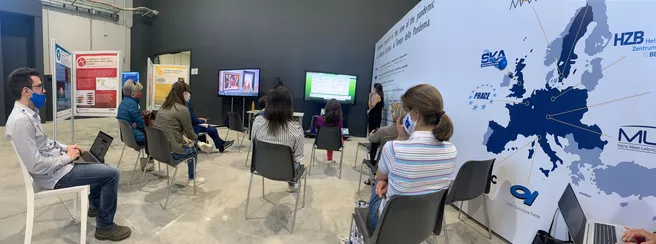Together with eight other major European research institutions, the Heinz Maier-Leibnitz Zentrum participated in the Science in the City Festival. Due to Corona travel restrictions, the participants could not visit the venue. Therefore, a total of 16 Italian scientists tuned in live from their scientific instruments in Germany, Great Britain or Sweden directly to Italy. The visitors in Trieste were thus able to listen to lectures in Italian, see the scientific environment and ask questions directly.
Three researchers at the MLZ participated in the live broadcasts. Laura Guasco, PhD student at the Max Planck Institute for Solid State Research, is researching new materials for hydrogen storage at the NREX instrument. Her lectures were entitled "Nuovi materiali per lo stoccagio di idrogeno e come trovarli" and are available online.
Dr. Stefano Pasini, lead scientist at Forschungszentrum Jülich, reported in his live presentations how neutrons decode the side effects of ibuprofen.This was investigated by scientists of Forschungszentrum Jülich using neutron spin echo spectrometry. There is also a recording on YouTube (start at 10:22).
Dr. Gaetano Mangiapia, instrument scientist of the Helmholtz Center Geesthacht at MLZ, was talking about solar energy. Using the neutron reflectometer REFSANS, scientists of the TU Munich had investigated how organic solar cells can increase their efficiency. His lecture is available on YouTube (start at 01:09:00).
Between the live broadcasts, English films about the research at the individual scientific institutes were shown. The MLZ participated with a film about research on antibiotic resistance at the BioDiff diffractometer with Dr. Johanna Jochum and Dr. Tobias Schrader and a film about imaging with neutrons at the NECTAR radiography facility with Dr. Adrian Losko.
Further information
Together with other science communicators, the press team of MLZ and FRM II is active in the Association of European-level Research Infrastructures Facilities (ERF-AISBL) in the RICE Working Group. Together the group organizes a workshop for science communication of large research institutions PARI (Public Awareness of Research Infrastructures) every two years and participates in the ESOF conference for the second time.
In 2018, the RICE working group of ERF-AISBL was active at ESOF with a booth at the central market place in Toulouse. At that time the "Olympics of Photons and Neutrons" attracted more than 4600 visitors, among them the French Minister of Science.
Information about ESOF Trieste: https://www.esof.eu/en/
Participating large-scale research facilities in Trieste:
- CERIC-ERIC, Trieste
- Elettra Sincrotone Trieste
- ESO, Garching
- European Spallation Source ESS, Schweden
- Helmholtz Zentrum Berlin
- MAX IV, Schweden
- MLZ, Garching
- PRACE, Brüssel
- Square Kilometre Array, Großbritannien


